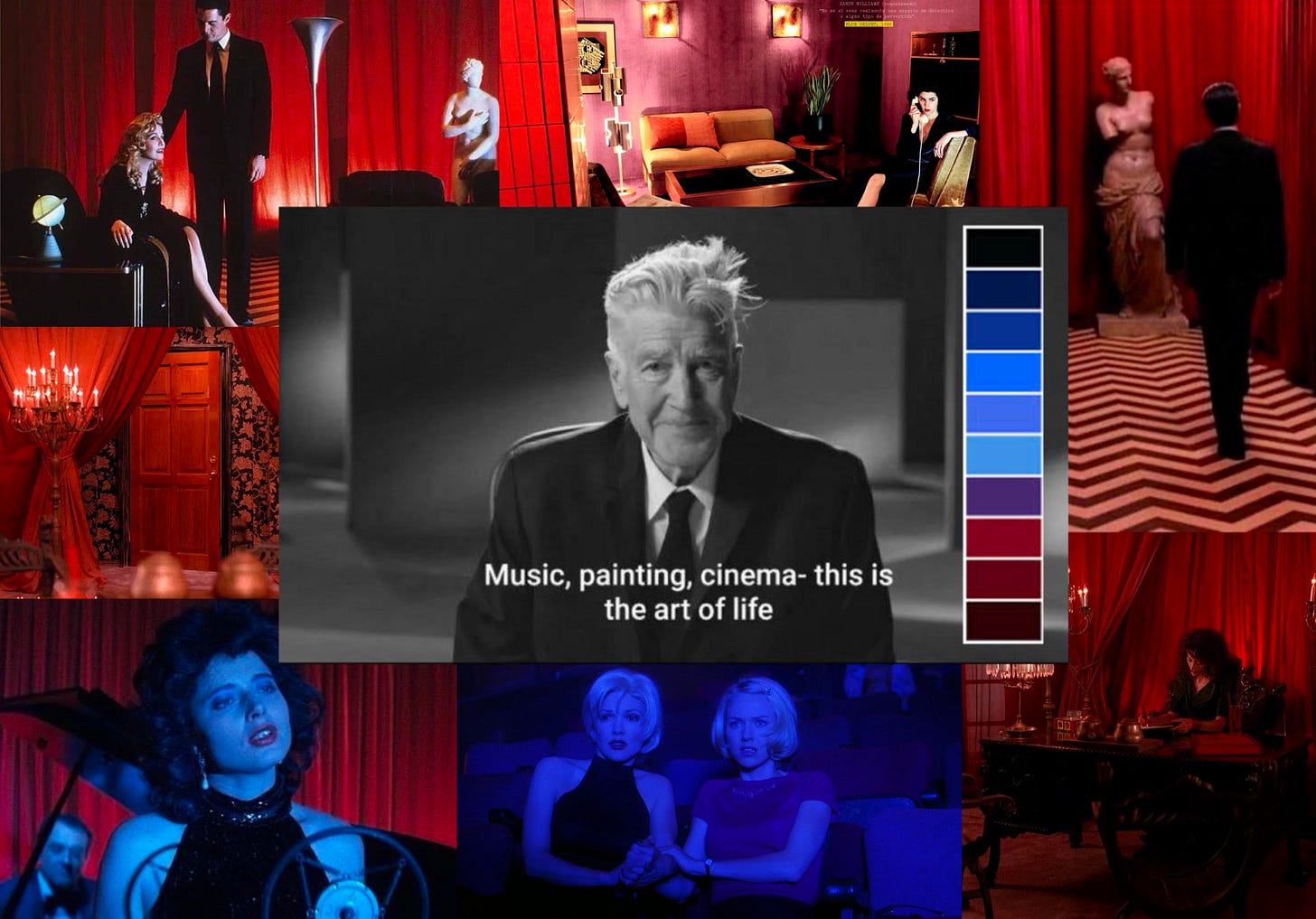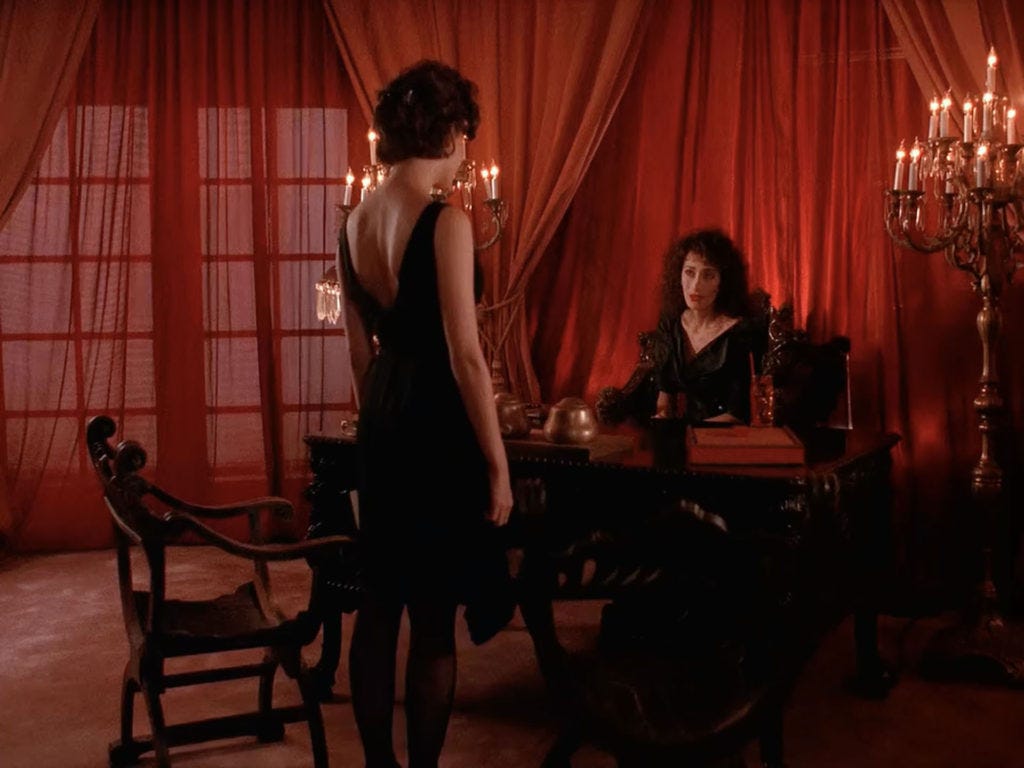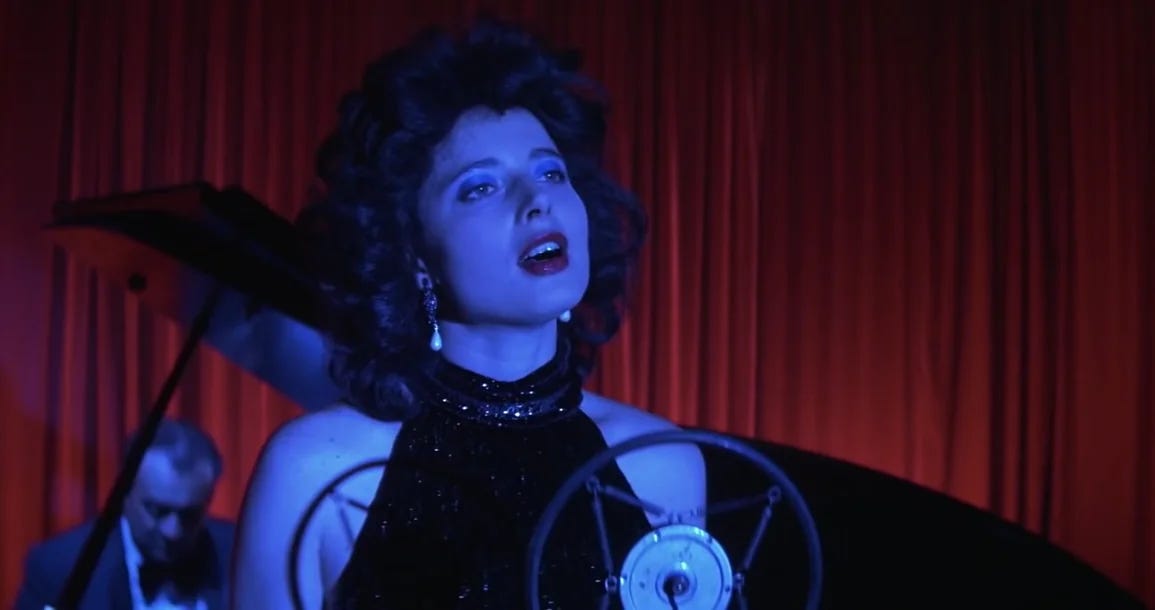Interiors in Film: The Work of David Lynch
A look into the surrealist dreamscapes of David Lynch
Recently, the world lost the legendary filmmaker David Lynch, known for films such as Blue Velvet, Eraserhead, and Mulholland Drive, and for his contributions to television with Twin Peaks. David Lynch was truly a filmmaker of another era. He believed in a multidisciplinary approach, with the language of cinema being incomplete if there wasn't attention given to every part of the screen: acting, sound design, set design, etc. He built worlds. He was an artist, through and through. Like many of the strongest artists, he didn't stick to one medium: alongside making films he was a painter, made music, and built furniture. He has even mentioned building pieces for a set when he couldn't find what he wanted. He was a lover of design, with a great appreciation for the architectural greats, mentioning “all the students of the Bauhaus School, and Pierre Chareau, he did the House of Glass in Paris, Ludwig Mies van de Rohe, all the Wright family, Rudolph Michael Schindler and Richard Neutra,” in an interview. In honor of Lynch, I’ll be looking back at some of his standout sets to highlight the way interiors can be used in the storytelling of film. While I can’t explain what exactly these sets mean, (not that Lynch would want me to!) I’ll explain the way design is used to enhance the experience of Lynch’s films.
Interiors in Lynch’s films are never static. They are character’s themselves, representative of themes and ideas bubbling under Lynch’s work. For Lynch, any space, even the most mundane, stood for something. Lynch has this inherent understanding of space that even seasoned designers may envy. He knew the possibilities showing these spaces on screen could have. Space isn't just a visual, it's emotional.
Twin Peaks and Twin Peaks: Fire Walk with Me
(mild spoilers for seasons one and two and FWWM)
Like in much of Lynch’s work, Twin Peaks is interested with the separation of interior and exterior life. The exterior, or what we choose to present to the world vs the darkness that lies inside of us. The image of the nuclear family stayed present in Lynch’s mind, an outside image that was often used to hide the horror that lies inside the family. This idea of the ideal exterior + true interior is emphasized through the set design.
The biggest example is the Palmer home. On the surface we see this typical image of the American home of the time. Carpet along the floor, wood furniture, crown molding. Yet, as we continue through Fire Walk with Me, we begin to see the interior as a veil among the horrors of the family. Eventually, the shot of this interior only creates fear and dread. One of the most memorable shots of the home is a low angle view of the ceiling fan in the stairway. How is a fan so scary? With just the low whir of the darkly-lit staircase, audiences are set to stare into the motion, questioning all they had to witness previously. Even more sinister, we begin to recognize this fan as (MAJOR SPOILER!) a tool used to cover the abuse playing out in the home of Laura Palmer. One of the most simple settings quickly becomes a symbol of something horrific.
Probably the most iconic Lynch set is the red room. All that is seen in the red room is long red curtains, a chevron floor, three armchairs, a saturn lamp, and a figure of the goddess Venus. This design contrasts greatly with the rest of Twin Peaks, which typically consists of fully wooden sets and natural interiors. The space itself is revealed to be the waiting room for the “Black Lodge” an otherworldly place for evil. This room is what truly lies under the town of Twin Peaks. The red is the most memorable aspect of the room, used to create an immediate sense of danger for the characters. Its presence is alarming, almost surreal.
Often, the spaces in his films didn't make sense. But, they perfectly represented the unease of the subconscious. In the last episode of season two, we see the character Dale Cooper go through the red room, opening curtain after curtain to reveal new horrors. It contains a dream-like atmosphere, with no understandable logic to the setup of the space. This creates a dizzying unease through the audience. Horror increases with the opening of each curtain. With a misuse of spatial logic, Lynch conveys a next-level understanding of the power of interiors.
Along with the red room, a similar style is set up in the design at One Eyed Jack’s. Red is used again to establish itself as a place separate from the rest of Twin Peaks. Instead of the town’s typical backdrop, we again set an interior of red. It sets the place up again as something dangerous, keeping audiences alert. Red here is also utilized as a symbol of lust, in line with the role One Eyed Jack’s plays in Laura’s story.
Other Lynch Interiors
The apartment of character Dorothy Vallen, a lounge singer under the control of the aggressive Frank.
Contrasted with images of white picket fences, manicured lawns and abundant gardens, this interior is dark and dingy. Lynch shows- this is what American neighborhoods are really hiding. Unlike Twin Peaks, there is no romantic air to this town.
In Blue Velvet (1986) artificial light + the red curtains in the bar are used similarly to Twin Peaks to show the danger of the “other side” of America.
If you have yet to check out any of Lynch’s work, I would recommend starting. I think designers can learn a lot from his work. He gives spaces and interiors the depth they should have, understanding the emotional weight design can bring. He knew to approach all aspects of design-what can be heard, what can be felt, etc. In the way a painting, movie, or song may tell a story, so should space. With the loss of Lynch, we lost a creator of worlds, a true dreamer, whose work inspired many, even outside of film.
P.S I would love to write something similar on other iconic movie interiors, so lmk any suggestions!










